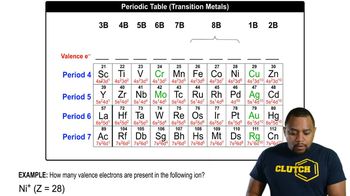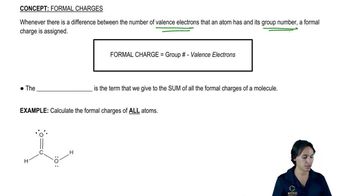How many valence electrons does each of the following contribute to a Lewis structure?
(j) Al
 Verified step by step guidance
Verified step by step guidance



 3:49m
3:49mMaster How to use Organic Chemistry to make Lewis Structures easier. with a bite sized video explanation from Johnny
Start learning